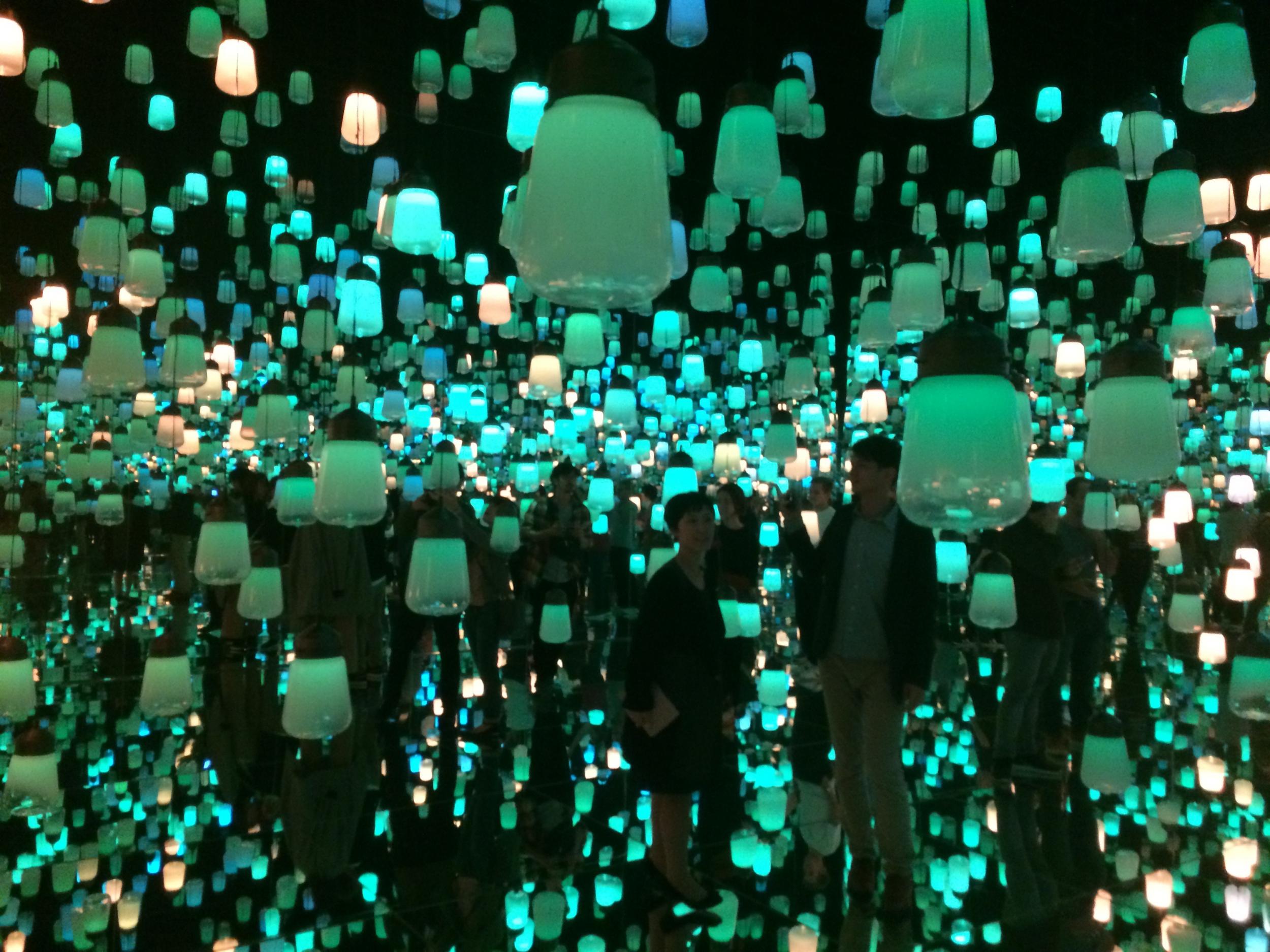The Independent's journalism is supported by our readers. When you purchase through links on our site, we may earn commission.
Tokyo DesignArt festival: Why the Japanese capital's creative scene goes way beyond manga
Artists and designers are joining forces in the Japanese capital, and it sure looks good

Seconds after landing at Tokyo’s Haneda airport, I’m snapping photos in an unusual place: the toilet.
It’s not just the heated seat that wows me, but the sleek control panel I can use to scroll through bidet-style water jets, and to programme the music the toilet plays as I go about my business.
The designers of the award-winning restroom (the Ministry of Land, Infrastructure and Transportation’s Toilet of the Year award, to be precise) at nearby Narita airport went even further. Here, cubicles hide behind material inspired by traditional shoji screens. Colourful projected images resemble shadows, giving visitors the impression they can see into the cubicles.
It’s a fantastic example of how Japanese design and art go hand-in-hand, and I’m at Tokyo’s second annual DesignArt festival to learn more.
For 10 days studios and galleries host exhibitions showcasing top designers and artists, including Keita Suzuki, one of many people blurring the lines between the two disciplines. At his exhibition, I’m particularly taken with a pastel-hued vase. Suzuki reveals it’s a speaker – place a phone inside and it amplifies the sound. I tell him I’ve been known to use pint glasses to create the same effect and he laughs. “That was my aim – to create something prettier than a pint glass!”
A night in Japan's robot hotel
Show all 10Suzuki’s first commission was the redesign of a Japanese train. It’s typical of the diversity which sets Japanese designers and artists apart. “We’ve always used different materials – paper, lacquer and stone,” he explains. “People associate Japan with cute stuff and manga, although it’s only one aspect.“ But like his contemporaries, he’s still keen to incorporate traditional elements. “I value our heritage, and believe locality will become more important for Japanese artists.”
It’s a point proven at the world’s largest digital art museum: the MORI Building Digital Art Museum, which opened in June 2018. It’s trippy, weird and wonderful. Almost 1,000 computers and projectors transform the 107,000-square-foot space with light, colour and sound. Patterns beamed onto walls swirl when I touch them, and I can control the lighting in certain rooms with my phone. But it’s also intrinsically Japanese. In the café, hidden projectors overlay customers’ plates with oriental blooms, and elsewhere, walls undulate with images of moving waves, drawn using the fine lines associated with Ukiyo-e, a traditional Japanese art form.
Abstract artist Hanako Yoshida’s exhibition isn’t in a gallery, but the showrooms of Tokyo-based interior design brand SieMatic. She’s another artist erasing barriers between design and art. One of her largest pieces is a kitchen counter, daubed with paint tinted red by chillies. Another of her exhibits is a colourful folding screen, made with aluminium rather than the delicate material usually used. Art and design are a natural fit, says Yoshida: “Japan is a small country with a relatively small art scene, and artists and designers have realised that working together is a great thing, especially from a business point of view,” she says.
One example of this is T-Site. Tokyo bookstore chain Tsutaya hoped to revitalise the Daikanyama neighbourhood by creating a space which wasn’t just a shop but a meeting place, with cafés and exhibitions. Klein Dytham Architecture, which created the hi-tech Narita Airport toilet, designed it – three beautiful buildings, linked by winding footpaths. The Japanese are avid readers, but don’t purchase many books – they visit bookshops, read books, then return them. T-Site was created with this in mind. Visitors are encouraged to read the store’s books at the cafés which line the footpaths and fill cosily lit corners. There’s even a stylish reading lamp-dotted bar (T-site opens until 2am), complete with book-print wallpaper.
There are regular art exhibitions – another Tokyo trademark. Art isn’t confined to galleries here. At the Park Hotel Tokyo, which works closely with the Hagurodo Gallery, 31 rooms have been given spectacular makeovers by Japanese artists.
“In 2008 there was the Lehman Brothers disaster, and then the earthquake, and visitor numbers dropped,” says Yuko Matsubara, head of marketing. “We wanted to find a new way to attract visitors.“
In my room, the walls resemble a thick forest, and another has a huge mural made from silver foil. My favourite room features enormous images of sumo wrestlers. “Japanese art is unique because we’re a small country, so we’ve got all these outside influences, but at the same time it feels very Japanese,” says Matsubara.
No artist proves this more than Yayoi Kusama, Japan’s most famous artist. She suffers chronic hallucinations – when she closes her eyes, she sees the dots which have become her trademark. At the Yayoi Kusama Museum, I find spotty pumpkins (another Yayoi trademark) and paintings depicting slug-like shapes surrounded by dots. Her work feels carefree, even if it comes from a dark place. And there’s definitely method in her madness. The pumpkin is a symbol of Naoshima, known as Japan’s art island due to its many galleries.
My visit to Yayoi’s museum reminds me of an earlier chat with a DesignArt curator. “There’s that Japanese DNA in all our artwork,“ she’d explained. ”We’re influenced by other places but we’ve just got this unique way of expressing ourselves.”
Not to mention the world’s coolest toilets.
Travel essentials
Getting there
British Airways flies from London Heathrow to Tokyo from £733 return.
Staying there
Artist Rooms at the Park Hotel Tokyo from £186.
More information
Subscribe to Independent Premium to bookmark this article
Want to bookmark your favourite articles and stories to read or reference later? Start your Independent Premium subscription today.

Join our commenting forum
Join thought-provoking conversations, follow other Independent readers and see their replies